SUNDAY JOINT, 9-15-2024: “FASHION FADES, STYLE IS ETERNAL”

Hey All,
We're doing another Sunday Joint graveyard today—a little of this, some of the other, stir and serve, bottoms up.
First things first, I owe Corky Carroll an apology and a correction. For 20 years now, EOS has noted (a bit smugly, maybe) that Carroll was gonged during his 1976 Gong Show appearance. Not so. In fact, Corky Carroll and his super-tight matching-outfitted Funk Dog Surf Band easily outpointed the field and took the $516.32 prize. Here is the entire episode, and like I said last week, the Gong Show was full-strength bonkers, this one begins with a performer in blackface lip-synching to Sammy Davis Jr (not gonged; scored 22 points out of 30), then Corky (29 points!), then a dog act called Taco the Canine Computer (not gonged; 17 points), a bookkeeper belly-dancer (not gonged; 26 points), an old-timey hillbilly-looking comedian (gonged hard), and then Carroll and his band return for the winner's celebration, at which time Corky, grinning like a Bowery Boy, with confetti and balloons in the air, drops into a tube-stance then pulls a soul arch, the man no doubt thinking, "American Bandstand here we come!"
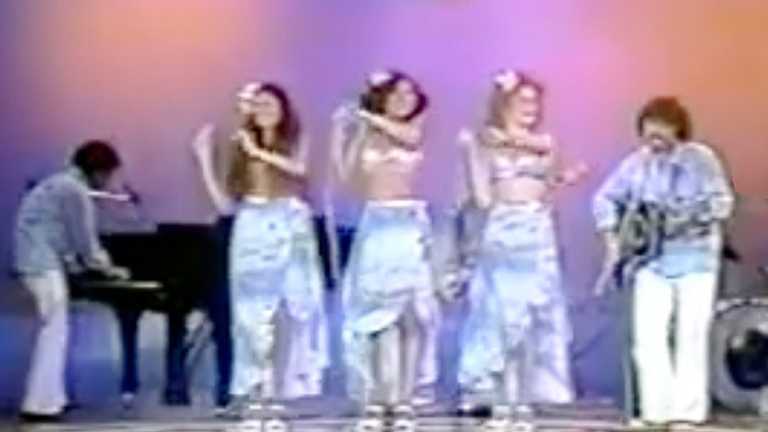
Sons of the Surf is an easygoing seven-minute short, from 1926, and a reminder that good wave-riders, on finless pre-hot-curl wooden planks, were already holding tight angles (2:02) and in general putting their muscled brown shoulders to surfing's evolutionary wheel. We don't see much of this in Waikiki film clips from the first half of the 20th century because the money shot was always taken from a canoe, Diamond Head in the background, with all parties riding in formation straight for the Royal Hawaiian. That's what we get starting at 3:02, with the two oldest Kahanamoku brothers, Bill and David, hamming it up. But look closer and you find bits not performed for the camera, the in-between pauses, the segues, and in those quieter moments we see a type of boardriding that in the mid-'20s was just coming into fashion, a super-casual approach that people my age still recognize as "Hawaiian style." There's not a lot of evidence to go by, but my take is that before the 1920s, as the sport was still recovering from its post-Western Contact near-death experience, style took a back seat as surfers relearned the basics—stand up, aim for shore, don't fall. Where to go from there? A famous 1910 photo shows a teenaged Duke Kahanamoku with both arms lifted out to his sides, fists balled, flexing (below left). He looks incredible. The idea here was to impress onlookers by striking a pose, like a bodybuilder, except while skimming across the water.
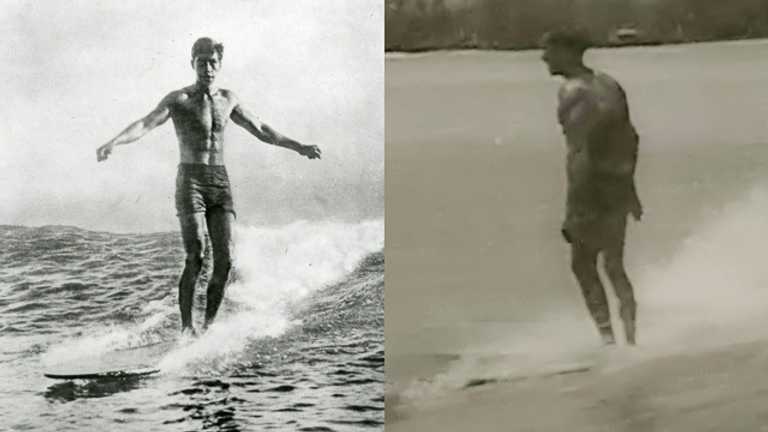
By 1926, however, many of the best surfers (all Hawaiian) were demonstrating mastery in a totally different way—by making it look as easy as possible. Hands low and loose, head forward, knees slightly bent and open. That's what you see in the black-and-white frame-grab here (above right), from Sons of the Surf, and I what I love most about this is how these traits carried on for the next 50 or so years, with (below, top to bottom) Rabbit Kekai, Kealoha Kaio, Paul Strauch, and Barry Kanaiaupuni. The Ho brothers had it, too, but since the 1970s, pro surfing has dictated how cutting-edge surfers ride, and the relaxed Hawaiian style by and large was never not a heat-winning approach. I suspect this beautiful way of riding is now mostly done by high-caliber longboarders.
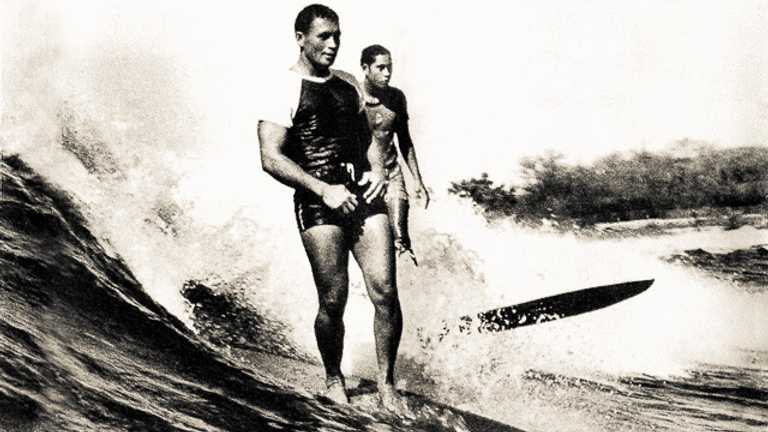
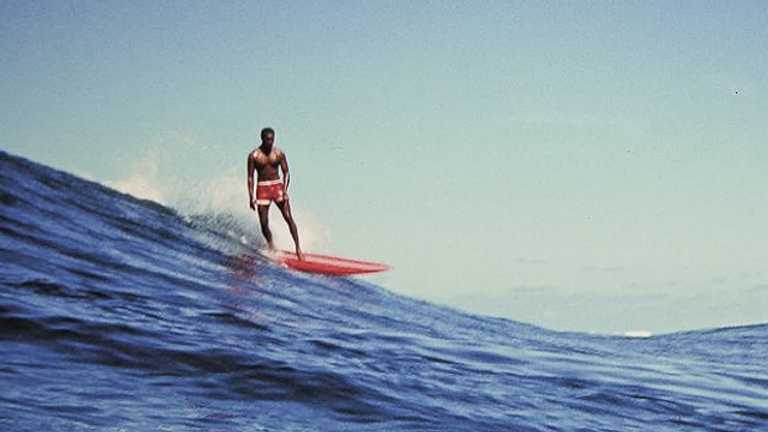
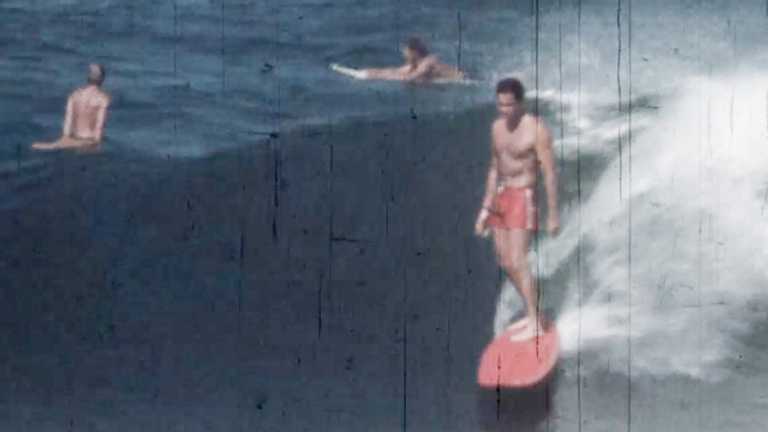
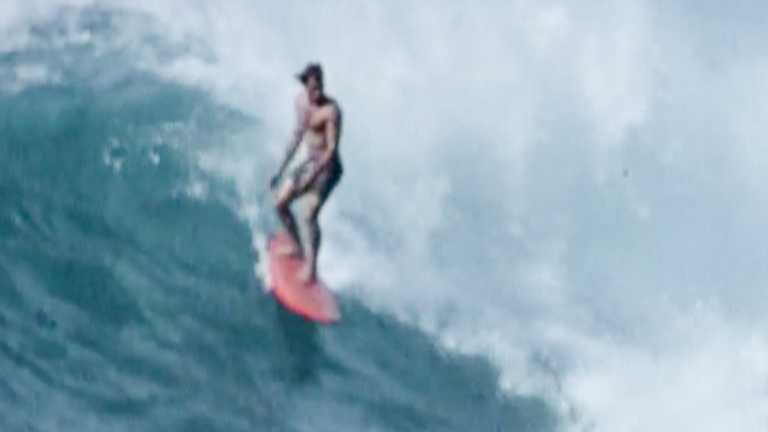
Two weeks ago, I reposted a Joint that ended with a tribute to the late great Dan Flecky, of Newport Beach. Days after that went out I came across a short film titled In the Mist of Summer, and maybe I saw it when it toured in 1977, I'm pretty sure I caught everything surf-related that passed through South Bay at the time, but if so, I have zero recollection. In a way, the film is very forgettable. Just the barest setup, followed by 20 minutes of Flecky and Ventura ace Russ Short surfing Puerto Escondido, all set to a homegrown Laurel Canyon-lite folk-rock soundtrack, plus an occasional bit of the purest, mellowest, most heavy-lidded dude-speak narration ever put to tape. As a piece of filmmaking, Mist of Summer rests on the safest possible ground. The only memorable image, apart from the surfing, is the opening shot, of Flecky and Short, slowly and cautiously, wearing nothing but flip-flops and micro-inseam trunks, riding a pair of undersized trail donkeys.

As a close study of two excellent West Coast surfers, though, Mist of Summer is first-rate. The waves pump start to finish. Flecky is the star, quick and elastic and sure-footed, with a big wide Shaun Tomson stance, and I had totally forgotten what an amazing switchfooter he was. Short, meanwhile, looks like Rory Russell at 1.5x speed—he clicks into tubes like they're magnetized, and between turns likes to throw his arms out for rhythm. The film quality and the soundtrack eventually wins you over, and I'm so glad Summer is out there looking as fine as it does, Dan and Russ both deserve it.
Thanks for reading, everybody, and see you next week!
Matt
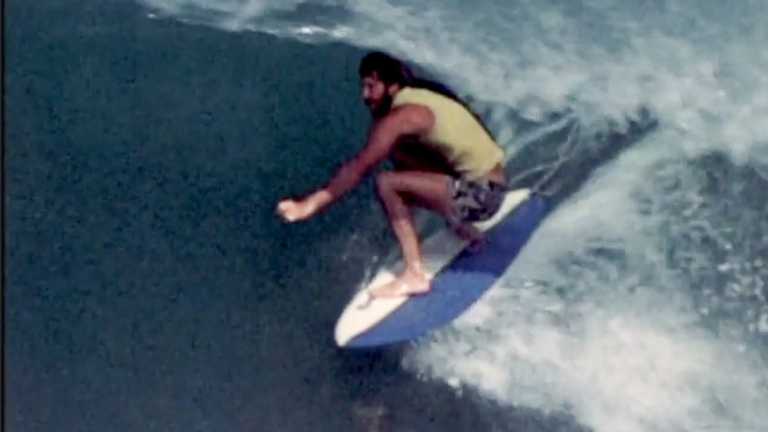
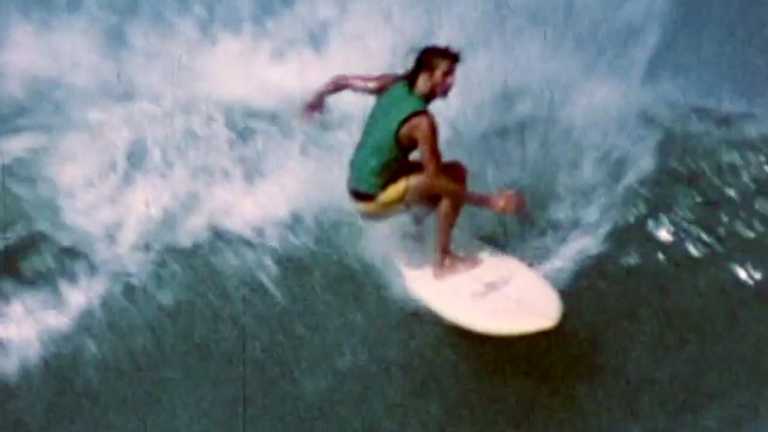
[Image grid, clockwise from top left: Barry Kanaiaupuni, 1967, photo by Ron Stoner; Russ Short from In the Mist of Summer; Chuck Barris and guest on the Gong Show; Bill Kahanamoku in Sons of the Surf; title card from Sons of the Surf; Dan Flecky and Russ Short from Mist of Summer. Corky Carroll and the Funk Dog Band on the Gong Show. Two Waikiki surfers, 1926. Rabbit Kekai, Makaha, 1950s. Kealoha Kaio at Sunset, photo by LeRoy Grannis. Paul Strauch at Haleiwa. Barry Kanaiaupuni at Sunset. Short and Flecky riding the donkeys. Flecky and Short surfing Puerto Escondido, in Mist of Summer. Big thanks to Dan Jethwa for sending all the great surf video links!]